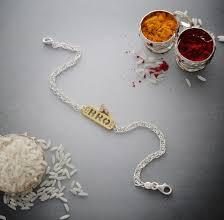In a world where swiping right has become as common as saying hello, the question arises: How many dating apps should you really be on? It’s like standing in front of a buffet, unsure if you should try a little of everything or focus on one dish. The answer? Well, it depends on your appetite for connection and your tolerance for digital small talk.
Being on multiple dating or hookup apps can cast a wider net, exposing you to a diverse pool of potential matches. Yet, it can also lead to decision fatigue and a sense of overwhelm. Conversely, committing to just one app might streamline your search but limit your exposure to different types of people.
Ultimately, the ideal number of dating apps is as unique as your dating journey. Whether you’re a serial swiper or prefer a more curated approach, the key is to find a balance that keeps you engaged without spreading yourself too thin. After all, it’s not about the quantity of apps but the quality of connections you make.
In this article, we will talk about how many dating apps you should use and what are the dating app mistakes you might be making. So, let’s get started!
How Many Dating Apps Should One Use?
Determining the optimal number of dating apps to use is a subjective decision influenced by various factors such as personal preferences, time availability, and desired outcomes. While some individuals find success by concentrating their efforts on a single platform, others may benefit from diversifying their approach across multiple apps.
For those seeking a specific type of relationship or demographic, focusing on one dating app may suffice. This approach allows for a more targeted search and deeper engagement within the community. By investing time and energy into mastering the features of a single app, users can maximize their chances of finding compatible matches and building meaningful connections.
However, limitations arise when relying solely on one platform. Hookup sites cater to a distinct user base with its own set of features, algorithms, and user experience. Consequently, users may miss out on potential active matches on alternative platforms. Moreover, the success of a dating app often fluctuates based on geographic location and cultural context, further underscoring the benefits of diversification.
Individuals can cast a wider net and increase theirs by utilizing multiple dating sites. This strategy offers the opportunity to explore different communities, experiment with various communication styles, and gain insights into one’s dating preferences. Additionally, diversification mitigates the risk of becoming overly reliant on a single platform, reducing the impact of any fluctuations in its performance or user base.
Nevertheless, managing multiple dating apps requires careful attention to avoid feeling overwhelmed or burnt out. It is essential to strike a balance between quantity and quality, prioritizing platforms that align with one’s goals and values. Establishing clear boundaries and allocating dedicated time for each app can help maintain focus and prevent the dilution of efforts.
Ultimately, the ideal number of dating apps varies from person to person. While some may thrive by concentrating their efforts on a single platform, others may find success through diversification. Regardless of the approach chosen, prioritizing authenticity, patience, and open-mindedness remains paramount in navigating the complex landscape of online dating.
Is it Good to be on Multiple Dating Apps?
Being on multiple dating apps can have both advantages and drawbacks, and whether it’s beneficial ultimately depends on individual preferences and goals. One of the primary benefits of being on multiple dating apps is the increased exposure to potential matches.
Each app has its own user base and features, so diversifying your options can broaden your pool of potential partners. This can be particularly advantageous for individuals living in areas with limited dating prospects or those seeking specific qualities in a partner that may not be readily available on one app alone.
Furthermore, being on multiple dating apps can provide a more well-rounded dating experience. Different apps cater to different demographics and preferences, offering unique features and approaches to matchmaking.
By exploring a variety of platforms, users can gain insights into what works best for them and refine their dating strategies accordingly. This experimentation can lead to a better understanding of one’s own preferences and priorities in a partner.
On the other hand, there are also potential drawbacks to being on multiple dating apps. Firstly, it can be time-consuming and overwhelming to manage multiple profiles simultaneously. Trying to keep up with messages, matches, and interactions across various platforms can be taxing, leading to burnout and frustration.
Ultimately, it is better to use 2-3 dating apps. You can choose which app you want to be on. Make sure you select an app that provides both security and unique features. Being on different platforms can sometimes make things more complicated.
Dating App Mistakes You Are Probably Making
Dating apps have become the modern-day Cupid, offering a plethora of potential matches with just a swipe. However, amidst the excitement of finding a potential partner, many users inadvertently make mistakes that hinder their chances of success.
1. Spreading Yourself Too Thin Across Multiple Apps
It’s tempting to sign up for every dating app under the sun, but doing so can backfire. Juggling too many platforms can lead to burnout and scatter your focus. Instead of making genuine connections, you might find yourself mindlessly swiping through profiles.
2. Finding the Right Balance
While there’s no one-size-fits-all answer, sticking to two or three apps is generally a good rule of thumb. This allows you to devote ample time and energy to each platform without feeling overwhelmed. Plus, different apps attract different crowds, so diversifying your options can increase your chances of meeting someone compatible.
3. Making Your Profile Stand Out
Neglecting your profile is a common mistake. Your bio and photos are your chance to make a memorable impression, so make them count. Choose clear, flattering photos showcasing your personality, and write a bio highlighting your interests and what you’re looking for in a partner. Skip the clichés and be authentic; it’ll help you stand out from the crowd.
4. Engaging in Meaningful Conversations
Sending generic messages like “Hey, how’s it going?” won’t get you far. Instead, tailor your messages to the person’s profile to show genuine interest. Ask thoughtful questions and share a bit about yourself to spark engaging conversations. It’s a surefire way to make a lasting impression.
5. Mindful Behavior and Communication
Respect is key when it comes to online dating. Avoid being pushy or aggressive, and always respect the other person’s boundaries. Don’t pressure anyone into meeting before they’re ready, and be mindful of your tone and language in conversations. Treating others with kindness and respect will set you apart in the online dating world.
Final Words: Should You Use Multiple Dating Apps at the Same Time?
In conclusion, the question of how many dating apps one should be on is ultimately a personal one, influenced by individual preferences and goals. Whether you choose to cast a wide net across multiple platforms or focus your efforts on a single app, what truly matters is the quality of connections you forge along the way.
Each approach has its merits and drawbacks, but finding the right balance that aligns with your dating journey is key. Whether you’re navigating the digital apps with a swipe-happy mindset or taking a more intentional approach, remember that the goal is not to exhaustively cover every option but rather to find meaningful connections that resonate with you.
So, whether you’re exploring a buffet of possibilities or savoring a single dish, trust your instincts, stay true to yourself, and enjoy the adventure of finding love in the digital age.














